Photonics HandbookFeatures
Optical Parametric Amplifiers: The Workhorse of Time-Resolved Studies
Wavelength-tunable sources have become integral to many high-speed microscopy and spectroscopy applications.
Valdas Maslinskas, Jonas Berzinš, Rimantas Grigonis, and Marco Arrigoni, Light Conversion
Scientific techniques, such as time-resolved spectroscopy and fluorescence, which contribute to advancements in biochemistry and biology applications as diverse as protein folding, tumor cell invasions, and neuron signaling, all require light that is tuned to very precise wavelengths. Many experimental situations rely on femtosecond tunable pulses with energy levels supported by the combination of chirped-pulse amplification (CPA) and nonlinear conversion processes. Technical improvements to the instrumentation addressing these needs have resulted in compact solutions that can be integrated into a variety of life sciences experiments.
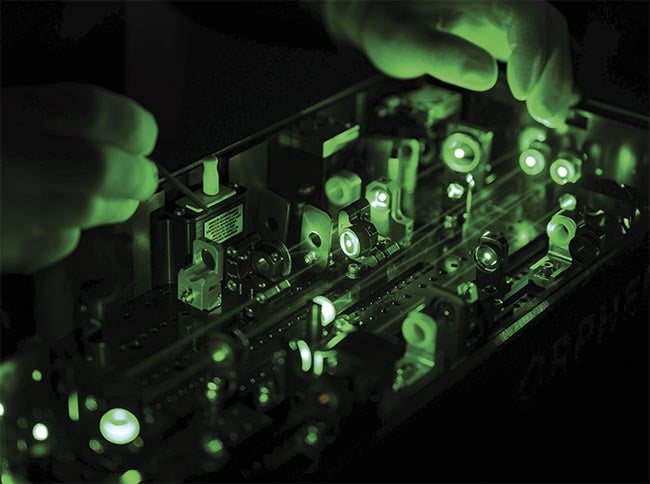
The inside of a working optical parametric
amplifier (OPA) generating a second harmonic
signal. Courtesy of Light Conversion.
Gérard Mourou and Donna Strickland earned a Nobel Prize when they invented CPA in 1985, which facilitated processes requiring energy above the few hundreds of nanojoules that were available from mode-locked lasers. While this initial demonstration was based on neodymium-doped hosts, CPA became widely commercialized due to the large bandwidth and short pulse duration supported by titanium sapphire (Ti:sapphire), which can produce pulses shorter than 10 fs from oscillators and shorter than 30 fs from chirped-pulse amplifiers. Starting in the late 1990s, CPA was applied also to ytterbium (Yb) lasers and amplifiers, both crystal- and fiber-based.
Fluorescence or vibration imaging, as well as spectroscopy, require light at precise wavelengths matching electronic or vibrational transitions of the sample.
Applications as diverse as attosecond science, three-photon imaging, optogenetic brain stimulation, and micromachining of arterial stents benefit from energy levels that would not be practically achievable without CPA. Industrial applications using picosecond and especially femtosecond pulses are generally insensitive to small variations of the laser wavelength in the NIR region, because the multiphoton absorption is not strongly wavelength-dependent. In cases in which visible or UV pulses provide sizable advantages, these wavelengths can be produced with simple and efficient harmonic generation stages placed after the laser amplifier.
Fluorescence or vibrational imaging, as well as spectroscopy, however, require light at precise wavelengths matching electronic or vibrational transitions of the sample. While Ti:sapphire mode-locked lasers are tunable between 700 and 1000 nm, in a Ti:sapphire amplifier, such tunability is greatly diminished or lost altogether because the amplification process pulls the wavelength toward the value where gain is the highest.
The need for femtosecond tunable pulses at the micro- or millijoule level can be satisfied using optical parametric generation. Here, an incident photon striking a suitable nonlinear crystal is converted into two photons of lower energies (longer wavelengths), so that total energy and momentum are conserved. If these two photons are at the same wavelength, the process is called “degenerate” and is the inverse of second harmonic generation. In the more general case, the two wavelengths are different; the shorter wavelength is called the signal and the longer one is called the idler.
Parametric generation was demonstrated shortly after the invention of lasers, leading to the development of optical parametric oscillators (OPOs) and optical parametric amplifiers (OPAs), which are often used in spectroscopic analysis. OPOs require a resonant cavity pumped by a continuous-wave, pulsed-nanosecond, or ultrafast laser. OPAs are reserved for energetic pump lasers where the parametric gain is so high that the required amplification is achieved in one or a few passes. In both cases, tunability is achieved by phase-matching the nonlinear crystal to generate a specific signal and idler pair. Phase matching is accomplished by adjusting the angle or temperature of the crystal or, more recently, by translating a crystal with a graded poling structure.
This article focuses on femtosecond and picosecond OPAs and their important variation — optical parametric chirped pulse amplifiers (OPCPAs) — as ubiquitous sources of tunable light, covering the spectrum from deep-UV (DUV) to MIR. OPAs have evolved to efficiently cover broader tuning ranges, produce pulses with durations much shorter than the pump laser pulses, and generate carrier-envelope phase (CEP) stable and high-contrast pulses. Technological improvements that provide more compact solutions and hands-off operations, permitting multidimensional studies of dynamic processes, will also be discussed.
From ultraviolet to mid-infrared
The basic structure of a femtosecond OPA is shown in Figure 1. In this setup, a fraction of the pump laser beam is focused on an undoped crystal (sapphire or tungstate) to produce a white light continuum that serves as the “seed” for the OPA. Most of the pump beam is directed toward a nonlinear crystal that is phase-matched to produce a specific signal and idler pair. The white light continuum seed must arrive on this crystal simultaneously with the pump pulse, and only the spectral component of the white light corresponding to the phase-matched signal and idler pair will be amplified in the nonlinear crystal, resulting in an energetic pulse at these two wavelengths. In the absence of the seed pulse, the parametric generation would start from noise in the nonlinear crystal, resulting in inefficient and pulse-to-pulse unstable output.
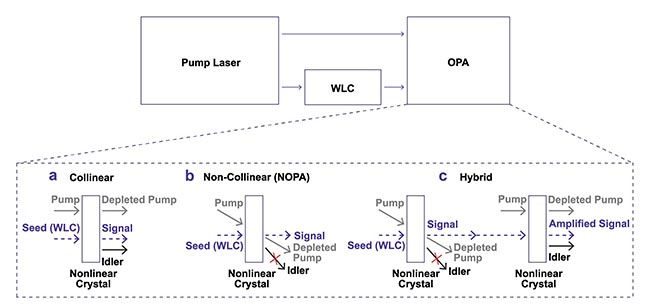
Figure 1. The basic block diagram of an optical parametric amplifier (OPA) setup and comparison of different types of OPAs: collinear (a),
non-collinear (b), and hybrid (c). WLC: white light continuum. Courtesy of Light Conversion.
Shortly after the CPA capability was demonstrated, the first Ti:sapphire laboratory systems began to be produced, and a few years later, commercial Ti:sapphire ultrashort-pulse lasers appeared on the market and began to be used for a variety of applications1. Around the same time, beta barium borate (BBO) crystals became readily available, and their remarkable nonlinear properties enabled efficient harmonic and parametric generation. These generators enabled significantly expanded tuning ranges of pulses generated by Ti:sapphire lasers and amplifiers, broadening their scientific applications.
OPAs designed for Ti:sapphire amplifiers use the 800-nm beam as the pump. The first commercial models of this type of OPA were developed and sold by Light Conversion in the early 1990s, while commercial OPAs pumped by Yb lasers were demonstrated in 2008. These OPAs generally use the second harmonic output of the amplifier, at 515 nm (opening image). More efficient generation in the MIR is achieved using the fundamental pump pulses at 1030 nm.
The key aspect of an OPA is its tunability. The tuning range of the signal and idler pair is limited by the wavelength domain, where phase matching is possible, and by the absorption of the crystal, often in the MIR region. For example, Yb-pumped collinear OPAs are generally tunable between 630 and 2600 nm, a wavelength region useful for addressing electronic levels (fluorescence), coherent Raman, and certain vibrational transitions, with the degeneracy point at 1030 nm (double the pump wavelength). In contrast, Ti:sapphire-pumped OPAs are tunable between 1160 and 2600 nm. In both cases, the overall tuning range is restricted by the absorption of the BBO crystal, limited to 2600 nm. Extension of the tuning range to shorter wavelengths is achieved by the second and fourth harmonic of the signal and idler, the sum-frequency of these with the fundamental, and their second harmonic. Long wavelengths, up to 15 to 20 µm, are achieved by difference-frequency generation between the signal or idler and the pump wavelength (Figure 2).
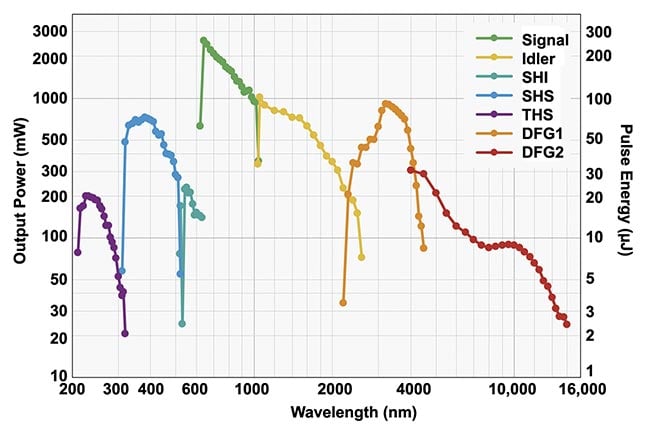
Figure 2. Typical tuning curves of a ytterbium (Yb)-pumped optical parametric amplifier
(OPA). DFG: difference frequency generation; SHI: second harmonic of idler; SHS: second
harmonic of signal; THS: third harmonic of signal. Courtesy of Light Conversion.
Despite the slightly lower pulse energy and longer pulse durations, Yb lasers coupled to OPAs have overtaken a significant portion of the time-resolved market, which includes applications such as tracking intra- and intermolecular energy pathways, using 2D electronic and vibrational spectroscopy or femtosecond stimulated Raman scattering. These systems are quite compact and sometimes even integrated onto the laser head (Figure 3). The main advantage of OPAs pumped by Yb lasers is a higher repetition rate, up to a few megahertz. Depending on the experiment, the switch from a kilohertz to hundreds of kilohertz repetition rate may significantly improve the signal-to-noise ratio, because it is proportional to the square root of a number of data points, which in this case are laser pulses. The switch could also make the entire experiment significantly faster, scaling proportionally to the pulse repetition rate2. For example, if a measurement using a kilohertz repetition rate Ti:sapphire system previously took half a day, the measurement can now be conducted in less than a minute using a Yb system.
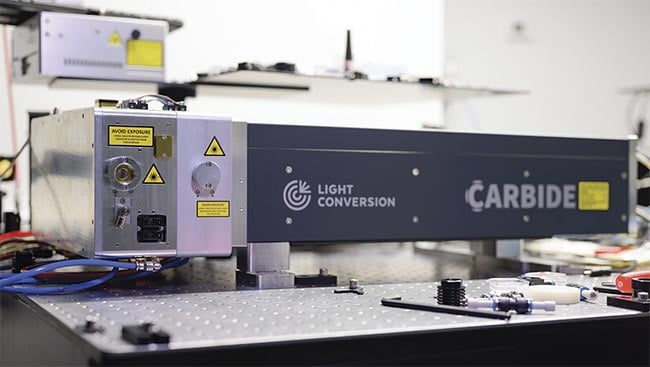
Figure 3. Light Conversion’s industrial-grade optical parametric amplifier (OPA) I-OPA
mounted on a CARBIDE femtosecond laser. Courtesy of Light Conversion.
Unlike Ti:sapphire amplifiers, Yb lasers have been widely proven in industry, working 24/7 in precision manufacturing and microelectronics environments, and operating for thousands of hours without maintenance. To extend wavelength flexibility for specific industrial and scientific applications, integrated OPAs are now available, offering a new paradigm of long-term power stability (Figure 4). A specific case is three-photon imaging, which typically requires only one or, more rarely, two wavelengths: 1300 nm and 1700 nm. The limited laser expertise available in an imaging laboratory and the specific wavelength requirements have led to the development of products that integrate a Yb amplifier and a fixed- or limited-tunable wavelength, along with beam conditioning to support the imaging application.
Two different directions for the next-generation OPAs have emerged in recent years: The first is industrial-grade OPAs, integrated with the laser and undergoing vibrational and thermal testing, thus merging scientific flexibility with industrial reliability.
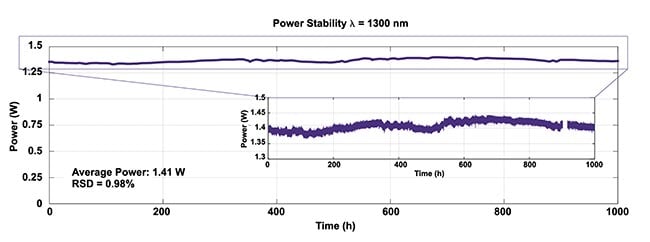
Figure 4. Output power measurement at 1300 nm from an optical parametric amplifier (OPA) pumped by an ytterbium (Yb) laser at 1 MHz
operation, over 1000 h, which resembles typical lab operation over a year. RSD: relative standard deviation. Courtesy of Light Conversion.
In parallel with the trend of integrating OPAs and pump lasers, a different trend is also taking place. In this case, the OPAs maintain their typical broad tunability but are equipped with multiple real-time output power, beam position, and diagnostic monitoring complemented by advanced control features. This trend enables seamless tuning over multiple spectral regions with limited or no operator intervention.
While a laser medium (crystal or fiber) must dissipate heat related to nonradiative relaxations and to the quantum defect between pump and emission wavelengths, the OPA/OPCPA process does not waste or dissipate energy in the form of heat.
Short-pulse generation
By design, most OPAs fall into two distinct categories, depending on the manner of pump-seed beam overlap in the nonlinear crystal. The beams can overlap collinearly or non-collinearly; consequently, the former devices are called non-collinear OPAs, or NOPAs. Each type has its own advantages and drawbacks.
Collinear interaction ensures the widest wavelength tunability range, because both signal and idler waves are available at the output. However, to achieve an output pulse duration considerably shorter than that of the pump laser, non-collinear interaction may be used. The non-collinear pump-seed beam interaction geometry allows for broad bandwidth pulse generation (down to a few optical cycles) when pumping with the second or third harmonic of a Yb-based laser. However, this comes at the cost of a limited tuning range, as the idler wave becomes unusable due to angular chirp, leaving only the signal wave available.
In recent years, a third, hybrid type of Yb-pumped OPA has emerged, combining the advantages of collinear and non-collinear geometries. Typically, such devices have two amplification stages: The first stage is non-collinear to achieve the broadest bandwidth, and the second stage (power amplification) is collinear to produce a usable idler wave and ensure broad wavelength tunability. Although such devices cannot achieve the shortest pulse durations of NOPAs or the gapless tuning ranges as collinear OPAs, hybrid OPAs have proved to be desirable in the scientific community and have received wide adoption in laboratories, employing spectroscopy and nonlinear microscopy. In fact, OPAs designed for three-photon imaging use this hybrid approach to produce 50- to 60-fs pulses at 1300 nm, even though the pulse duration of the pump laser is much longer, at 250 to 350 fs.
CEP-stable output
When working with few-cycle pulses, for example, in the areas of strong-field physics, isolated attosecond pulses, and extreme-UV or x-ray generation, CEP plays an important role to achieve exquisite precision and control of the experiment. CEP is defined as the phase delay between the tallest half-cycle of the electric field under the pulse envelope and the peak of the envelope and is usually measured in milliradians (Figure 5). In general, CEP varies from pulse to pulse due to small changes in the chromatic dispersion of the optical medium. CEP stabilization of an ultrafast amplifier requires sophisticated and expensive phase-locking electronics.

Figure 5. Carrier-envelope phase (CEP) in the time domain. Courtesy of Light Conversion.
However, a unique feature of OPAs is that they permit passive CEP stability of the idler wave without the complications and cost of active stabilization. This happens because the white light continuum used for seeding the OPA inherits the non-stabilized CEP phase of the laser pump pulse. As the idler wave appears through the process of difference-frequency generation between the pump and signal (seed) waves, when the white light continuum is generated by the same wavelength as used for the pump, CEP fluctuations cancel out, and the resulting idler wave becomes passively CEP stabilized. The same concept is used to CEP-lock the output of OPCPA systems (described in the following section) to achieve stability values notably <100 mrad when pumped with stable laser sources.
OPCPA: an extreme case of NOPA
The overall evolution of developments in this technology would not be complete without mentioning one final specific type of OPA, which can be considered as a highly specialized iteration of NOPA. This is OPCPA, a concept demonstrated by professors Audrius Dubietis, Gediminas Jonušauskas, and Algis Petras Piskarskas in 1992 and applied in numerous fundamental physics studies3. Its principle resembles the concept of CPA. In fact, the OPA seed pulse is stretched (chirped) prior to the parametric amplification stage and subsequently compressed, as in CPA (Figure 6).
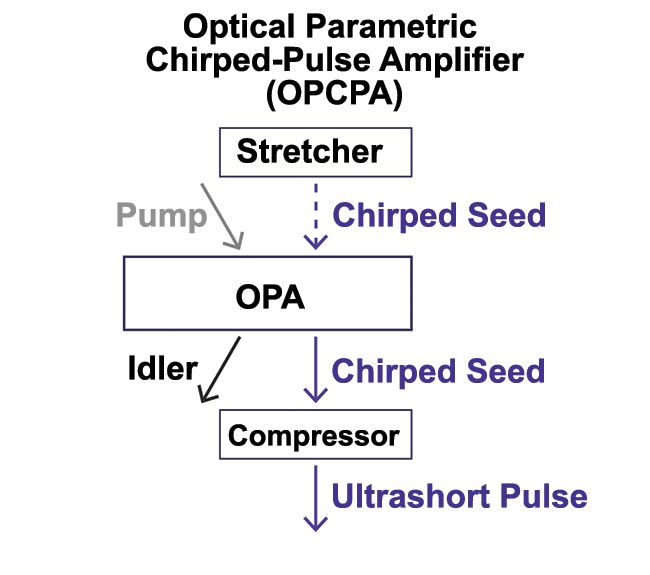
Figure 6. A principal scheme of an optical
parametric chirped-pulse amplifier (OPCPA).
Courtesy of Light Conversion.
In addition to the evident benefit of limiting peak pulse intensity on the nonlinear crystal to prevent its damage, stretching also permits the use of long (tens to hundreds of picoseconds or even nanoseconds) pump pulses for amplification. Long-pulse lasers, contrary to femtosecond ones, can easily deliver pulses of hundreds of millijoules or even joules in a relatively compact and cost-effective package. Matching the stretched OPCPA seed pulse duration with such long pump pulses enables efficient energy extraction to the signal wave (with the idler being discarded).
Moreover, due to the non-collinear interaction geometry, enabled by broad-bandwidth amplification, OPCPA allows the generation of few-cycle highly energetic pulses with terawatt-level peak intensities. While a laser medium (crystal or fiber) must dissipate heat related to nonradiative relaxations and to the quantum defect between pump and emission wavelengths, the OPA/OPCPA process does not waste or dissipate energy in the form of heat. This means that the beam’s thermal distortion is much less severe than in a CPA system and the OPCPA can more easily produce high-intensity pulses at higher average powers.
An exemplary case is the system installed at the Extreme Light Infrastructure Attosecond Light Pulse Source (ELI-ALPS) open-access laser research center in Hungary (Figure 7). This system, designed and implemented by a consortium of Lithuanian laser manufacturers, offers >15-TW peak power and >120-W average power.
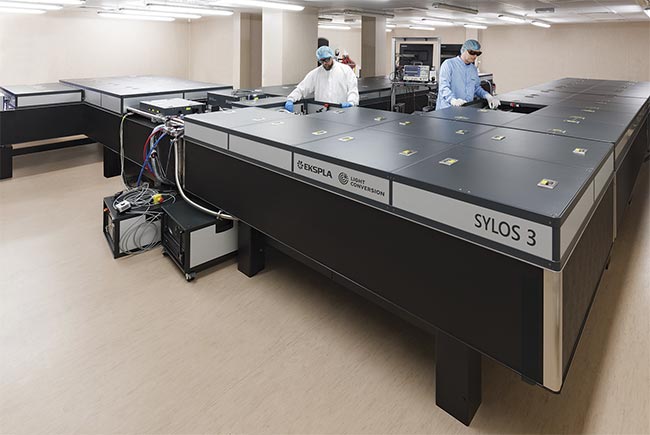
Figure 7. The SYLOS 3 high-intensity laser system. Courtesy of Light Conversion.
Furthermore, the instantaneous manner of parametric amplification helps to circumvent parasitic amplified spontaneous emission inherent to lasers that would result in a long and incoherent pedestal. Because of this, OPCPA output pulses are exceptionally “clean,” with temporal pulse contrast exceeding that of a comparable laser system by more than four orders of magnitude. These clean pulses are essential to seed extremely high-energy lasers, such as the ones in national laboratories, because the presence of pre-pulses or a pedestal would damage the optics and deplete the gain of the high-energy laser.
A look to the future
CPA has revolutionized ultrafast science and femtosecond industrial manufacturing. However, lasers using this approach are not tunable over any significant range. OPA has addressed this exact need, specific to ultrafast spectroscopy but also in other areas of ultrafast science — from attosecond science to nonlinear microscopy. With tuning ranges from the DUV to the MIR, OPAs and OPCPAs fulfill these applications and can even circumvent additional limitations of CPA systems, such as producing sub-10-fs pulses, simplifying CEP stabilization, improving pulse contrast ratio, and enabling high-repetition-rate terawatt-class pulses.
OPAs and OPCPAs for Yb lasers have become synonymous with ultrafast spectroscopy. Recently, OPAs have also found applications in additional areas, such as multiphoton imaging and optogenetic stimulation for neuroscience4 or wavelength-selective micromachining5.
Technology and reliability improvements in CPA amplifiers — especially compact Yb-based devices — have been mirrored by similar improvement in OPA, leading to full integration with the pump laser and/or black-box devices with fully automated control and remote diagnostics, enabling more extensive time-resolved experiments in molecule structure and dynamics.
References
1. K.F. Wall and A. Sanchez. (1990). Titanium sapphire lasers. Lincoln Lab J, Vol. 3,
No. 3, pp. 447-462.
2. M. Vengris et al. (2021). Advantages of high-repetition-rate femtosecond lasers. Laser Focus World, Vol. 57, No. 5, pp. 59-62.
3. A. Dubietis et al. (1992). Powerful femtosecond pulse generation by chirped and stretched pulse parametric amplification in BBO crystal. Opt Commun, Vol. 88,
No. 4-6, pp. 437-440.
4. A. Forli et al. (2021). Optogenetic strategies for high-efficiency all-optical interrogation using blue-light-sensitive opsins. eLife, Vol. 10.
5. M. Barkauskas (April 2024). Ultrashort-pulse lasers for processing with atypical wavelengths. AKL’24 International Laser Technology Congress, Aachen, Germany.
Meet the authors
Valdas Maslinskas is product manager for high-intensity systems at Light Conversion, with more than 15 years of expertise in the scientific laser system sector; email: valdas.[email protected].
Jonas Berzinš is head of product management and marketing at Light Conversion; email: [email protected].
Rimantas Grigonis is former head of TOPAS (OPAs for Ti:sapphire lasers) product group at Light Conversion and a senior researcher at Vilnius University’s Laser Research Center; email: [email protected].
Marco Arrigoni, vice president of marketing at Light Conversion, has more than 30 years of experience in market development for ultrafast lasers; email: [email protected].
/Buyers_Guide/Light_Conversion/c16417
Published: September 2024
Glossary
- fluorescence
- Fluorescence is a type of luminescence, which is the emission of light by a substance that has absorbed light or other electromagnetic radiation. Specifically, fluorescence involves the absorption of light at one wavelength and the subsequent re-emission of light at a longer wavelength. The emitted light occurs almost instantaneously and ceases when the excitation light source is removed.
Key characteristics of fluorescence include:
Excitation and emission wavelengths: Fluorescent materials...
- chirped-pulse amplification
- Chirped pulse amplification (CPA) is a technique used in laser physics to amplify ultrashort laser pulses to high energies without causing damage to the amplifying medium. The method was first proposed by Gérard Mourou and Donna Strickland in the mid-1980s and has since become a fundamental technology in the field of high-intensity laser systems.
The basic idea behind chirped-pulse amplification involves stretching the duration of a short laser pulse temporally (chirping) before it...
- crystal
- A solid with a structure that exhibits a basically symmetrical and geometrical arrangement. A crystal may already possess this structure, or it may acquire it through mechanical means. More than 50 chemical substances are important to the optical industry in crystal form.
Large single crystals often are used because of their transparency in different spectral regions. However, as some single crystals are very brittle and liable to split under strain, attempts have been made to grind them...
- phase matching
- Phase matching is a crucial concept in the field of optics, particularly in nonlinear optics and the generation of coherent light. It refers to the condition where the phases of two or more waves, such as laser beams, are adjusted or aligned in such a way that their combined effect is maximized.
In nonlinear optics, various processes involve the interaction of multiple waves within a material. For efficient energy conversion and amplification, it is essential that the phases of these waves...
Featuresoptical parametric amplifiersLaserstime-resolved spectroscopyfluorescenceChirped-pulse amplificationTi:sapphireytterbiumcrystalOPOOPCPAphase matchingcarrier-envelope phaselight conversionNOPA